Weekly cattle and sheep market wrap
Key points
- Queensland’s 7% cattle yarding increase was outweighed by NSW’s 24% drop.
- Restocker lamb prices lifted to within 3¢ of trade and heavy weight values.
- National cattle slaughter increased, with Queensland seeing the highest throughput since July.
Cattle market
The cattle market saw a mixed week with indicators ranging from an 8¢/kg liveweight (lwt) fall to an 11¢ /kg lwt lift. National yardings dropped 12% to 65,155 head after the week prior’s strong supply. A 7% rise in Queensland yardings to 27,853 head was outweighed by a 24% drop in NSW, where rain and seasonal confidence limited supply.
The National Processor Cow Indicator reached a new high of 379¢/kg lwt, surpassing the previous 375¢/kg lwt peak recorded last month. Demand remained firm, particularly in NSW, where prices lifted to 395¢/kg lwt. Yardings, however, continued to decrease, especially in Queensland and NSW.
The National Restocker Yearling Steer Indicator fell 8¢ to 477¢/kg lwt, driven by a 13¢ decline in Queensland to 473¢/kg lwt. In contrast, strong buyer competition and restocker confidence in NSW pushed prices up 20¢ to 498¢/kg lwt, despite mixed quality and condition.
Sheep market
The volatile sheep market continued with indicators moving both up or down by 30−60¢.
Lamb yarding volumes varied across states. WA saw a near 3,000 head decline but a significant Victorian increase led to a slight 11 head change nationally week on week (WoW) for 165,979 head. A stable lift in sheep yardings brought combined sheep and lamb yardings up 1% to 247,844 head.
Positive outlook and rainfall throughout NSW have buoyed the restocker market, lifting the National Indicator price 63¢ up WoW to 1,155¢/kg carcase weight (cwt). This marks the indicator’s highest nominal price on record and places it just 3¢ below trade and heavy weight values. In NSW saleyards, however, restockers were the highest performer, surpassing trades and heavies.
The National Trade Lamb Indicator eased 27¢ WoW to 1,159¢/kg cwt, aligning it with heavy lambs at 1,158/kg cwt, which saw a 1¢ increase. Despite volumes remaining stable, prices for finished stock continue to flatten.
Slaughter
Week ending 12 September 2025
Cattle slaughter
National cattle slaughter lifted 2% to 151,824 head, 8% above the 2025 weekly average. Growth was driven by Queensland, up 9% to 81,710 head - the highest weekly slaughter since July. NSW remained steady, Tasmania halved (–53%), and all other states eased around 3% WoW.
State-by-state breakdown of cattle slaughter:
- NSW: stable at 35,387
- Queensland: up 9% to 81,710
- SA: down 3% to 3,758
- Tasmania: down 53% to 1,786
- Victoria: down 3% to 25,549
- WA: down 3% to 3,634.
Sheepmeat slaughter
National sheep and lamb throughput lifted 1% to 499,525 head, driven by a 5% rise in Victoria to 222,324 head as operating days for plants increased from the week prior. Despite the lift, volumes remain 17% below the 2025 weekly average of 602,574 head.
National lamb slaughter increased 3% to 363,255 head, supported by gains in most states, particularly Victoria (+6%) and NSW (+1%). SA was the only state to decrease - falling 3% to 40,048 head.
Sheep slaughter eased 5% to 136,270 head, led by a sharp 20% drop in WA to 24,999 head after a strong prior week. NSW followed with a 7% fall to 50,105 head, its lowest throughput since July. Increases in SA (+14%) and Tasmania (+26%) could not offset these declines, while Victoria remained steady WoW.
State-by-state breakdown of lamb slaughter:
- NSW: up 1% to 100,659
- Queensland: up 6% to 1,403
- SA: down 3% to 40,048
- Tasmania: up 0.4% to 5,488
- Victoria: up 6% to 174,977
- WA: up 3% to 40,680.
Information is correct at the time of publishing on 12 September 2025.
Attribute to: Emiliano Diaz, MLA Market Information Analyst



